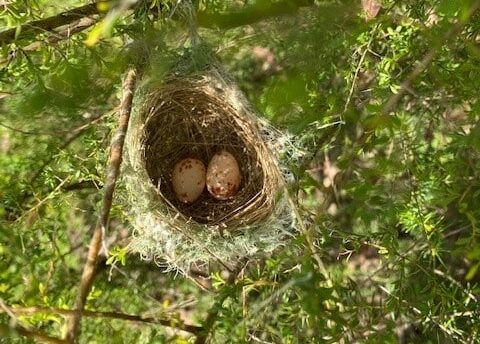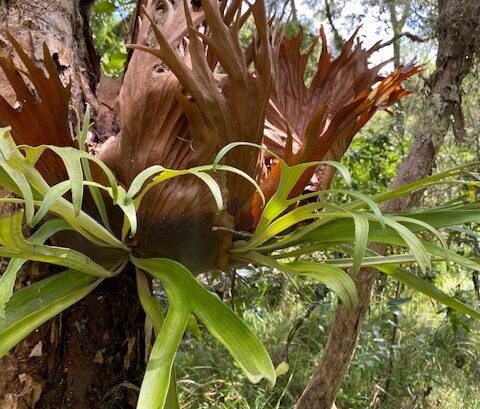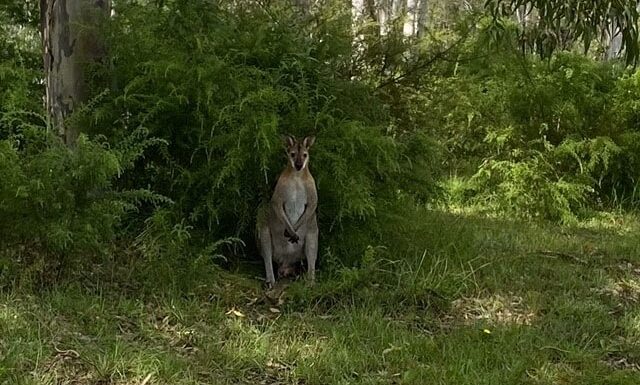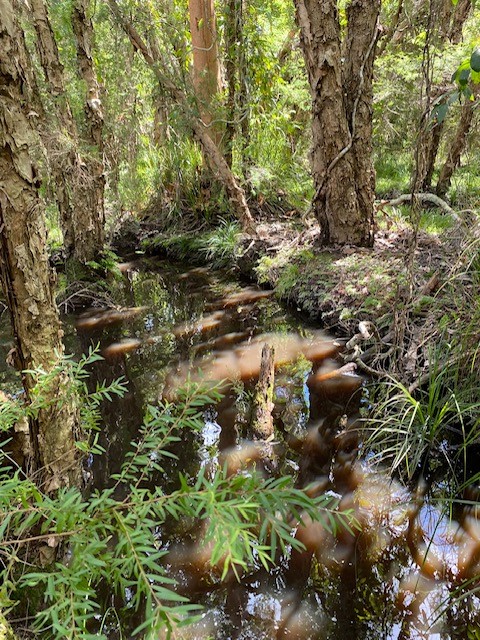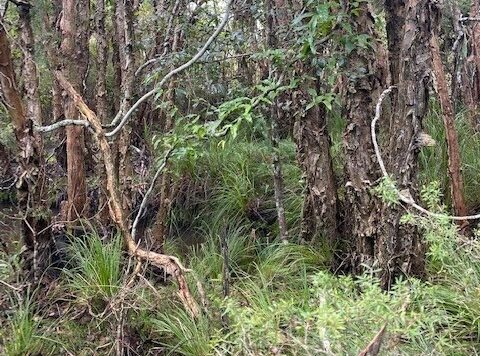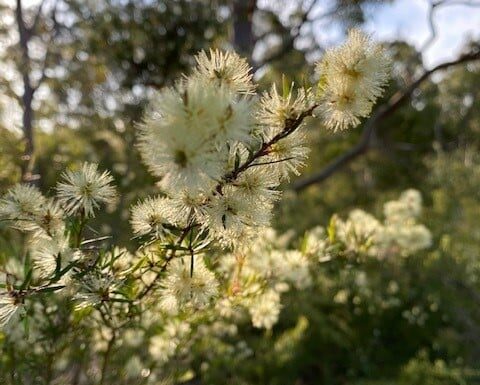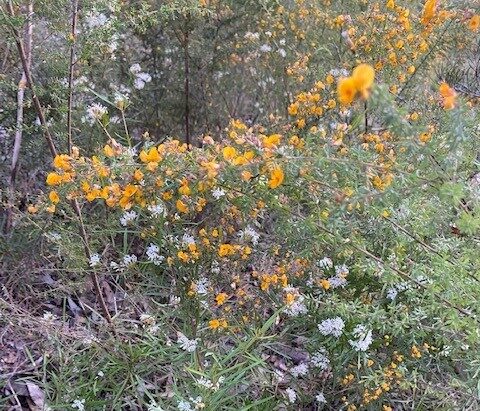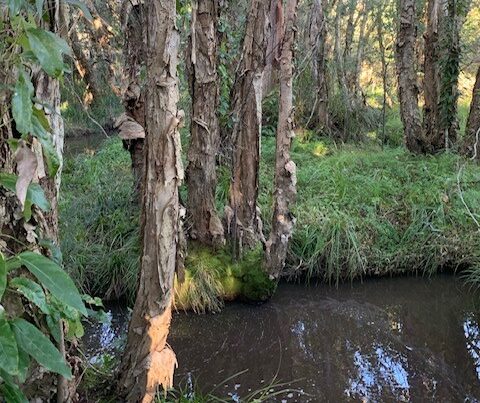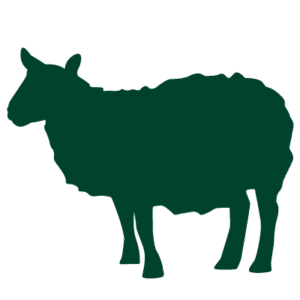Tarcoola is a 2.67ha rural property on Worimi Country, Clarence Town, 63 kms north of Newcastle. Predominately a hobby farm with a large dam, owners Fiona & Daniel Wasley grow seasonal vegetables and Australian wildflowers. The majority of the property has been historically cleared, except for a fenced off area of remnant vegetation along a first order stream which joins the Williams River 2kms away.
The property is 200 metres from the Wallaroo National Park, and was named Tarcoola in 1994, which means ‘river bend’ (non-local First Nations language). Over the past 4 years, additional key areas on the property have been left to naturally regenerate, and together with a neighbouring bushland block, a total area of approximately 2 ha now exists solely for wildlife.
In 2021 Tarcoola joined Land for Wildlife and had an ecological assessment which confirmed the property had “notable nature conservation values due to its connectivity to a large expanse of native bushland (Wallaroo National Park) – particularly due to the large number of mature native trees and the structural diversity of the remnant vegetation.”
Tarcoola is the first property in Clarence Town (population 2265) to join Land for Wildlife and also the first to join the Wildlife Land Trust. With increasing subdivision and land clearing occurring, Fiona & Danny believe that now more ever it is important that landholders allow remnant vegetation and wildlife corridors to continue to exist. By sharing Tarcoola on social media and installing wildlife cameras they hope to raise awareness and inspire their local community and beyond to allow bush areas to regenerate or plant a native garden with endemic species.
In August 2022 an independent ecological assessment was undertaken exclusively on the riparian area of Tarcoola which concluded native vegetation is classed as Spotted Gum/Ironbark Woodland, an Endangered Ecological Community.
Vegetation is comprised of various species of Eucalyptus, Melaleuca, Acacia, Angophora, Leptospermum, Xanthorrhoea and a wide range of native orchids, grasses and shrubs, as well as unconfirmed state and nationally threatened species Grevillea parviflora subsp. parviflora (Small-flowered Grevillea) which is currently being assessed by the National Herbarium of NSW.
A range of native fauna are found on the property including Eastern Grey Kangaroos (Macropus giganteus) and Swamp Wallabies (Wallabia bicolor). Birdlife is abundant and includes Yellow-tailed Black Cockatoos (Zanda funereus), Glossy Black Cockatoos (Calyptorhynchus lathami),Yellow-faced honey eaters (Caligavis chrysops), Superb Blue Wrens (Malurus cyaneus), Willie Wagtails (Rhipidura leucophrys), Double-barred Finches (Taeniopygia bichenovii), Jacky Winters (Microeca fascinans), Eastern Great Egrets (Ardea modesta), Welcome Swallows (Hirundo neoxena), Galahs (Eolophus roseicapilla), Wood Ducks (Chenotta jubata), Eastern Rosellas (Platycercus eximius) Crimson Rosellas (Platycercus elegans) Magpies (Gymnorhina tibicen), Kookaburras (Dacelo novaeguineae), King Parrots (Alisterus scapularis), Swamp Hens (Porphyrio porphyrio) and Royal Spoonbills (Platalea flavipes).
Using Browning trail cameras, Fiona and Danny are hoping to capture evidence of spotted-tailed quolls (Dasyurus maculatus) and threatened species which have been recorded within proximity to Tarcoola – Koalas (Phascolarctos cinereus), Grey-Crowned Babblers (Pomatostomus temporalis temporalis), Squirrel Gliders (Petaurus norfolcensis) and Varied Sittelas (Daphoenositta chysoptera).

